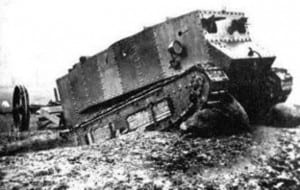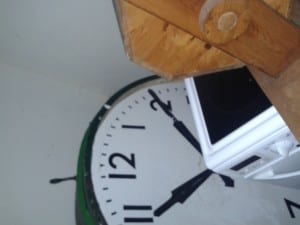At what cost do you give a life?
‘The penny is 94 per cent steel, 1.5 per cent nickel and 4.5 per cent copper plating or copper-pated zinc.’ ((Graham, David(2013)Artists and craftspeople turn to the penny as a new creative medium, Online:www.thestar.com(accessed: 06 May 2013)).
Pennies are something we find annoying, you always have them, you always feel their not worth a lot and they take up to much space in your purse. If you have 100 pennies you make a pound, 1’ooo and you have ten pound and 9’ooo you have 90 pound.
Dale Dunning is a sculptor in Almonte, he mainly deals with metals and giving these metals a new purpose in his studio called the Lost and Foundry, one of his recent works was creating a mask made entirely from pennies, similarly in our piece we are creating the United Kingdom’s flag out of 9,ooo pennies. Each of these pennies represents the life of a soldier, the soldiers from the Lincolnshire regiment who gave their lives in ww1. Jeremy Deller describes the ideas in his book procession as ‘ Having an idea for this kind of thing is the easy part, making it happen is a much more time consuming process’. ((Deller. Jeremy (2010) Procession, cornerhouse and Manchester international festival)). We had to try many different ideas to find one simple yet effective enough to execute. Therefore we decided as a mark or respect and to tie in with our British theme all 9’000 of these pennies were to be The Queen’s head facing up. Eventually through the duration of the performance the entire flag would be completed, with our parting statement being ‘ 9’000 soldiers from the Lincolnshire regiment gave their lives to ww1′.
Our idea had taken a 360 degree turn, when first visiting the site, we felt almost as if its purpose had never changed as though it would be filled with spectators at any moment or looking out the window we would see a tank or would see soldiers lining the grassy banks. ‘If site-specific performance involves an activity, an audience and a place, then creative opportunities reside in the multiple creative articulations of us, them and there’. We visited each space, to feel them to find what they meant to us and how they could be used to the best of our ability. We then arrived to the Lincolnshire Archives and through extensive research started to develop passion towards certain areas, finding out the past of the Grandstand proved to be fascinating as it’s history went on for years so much so, we found out it wasn’t actually The Grandstand and The Grandstand had in fact been taken down and the stand we speak of as the Grandstand is actually The Tattershall stand. At first other members of the group shared my interest in a particular story of the Beechey brothers a famous story due to the nature of the mother Amy Beechey loosing five sons, through more research and development of ideas we knew in fact there was much more to it than what we were seeing. So many lives were lost so many grieving families and friends. How to focus on one specific story? In Mike Pearson’s book on ‘Site Specific Performance’ he states ‘ To outline stances, attitudes and presuppositions’ you ask ‘Who am I and what am I doing?’ ((Pearson, Mike (2010) Site specific performance, Palgrave macmillan)). We decided that we were not storytellers we wanted to present facts and we wanted the audience to understand how we felt for these soldiers who had given their lives for their country with Lincoln at the time having a population of around 45000 losing 9000 men is devastating. Many more were lost due to things such as the gas’s released from bombs.
The idea of the coins creating the picture came from the idea that all men in the war had vices. We spoke to a woman called Tracey who used to write to relatives and friends in ww2 and she said this’ I used to write to Paul my brother and friends like John and Nath the most because I knew they would look forward to getting them, it must have been horrible waiting for the post to arrive and you would be the only one not to receive any thing. I think you would feel so shut of and alone’. We thought for the Beechey brothers, letters were their vices, as in their letters they talk of all their correspondents. Through more research we found some men found comfort in things like poems and art. The picture we recreated was one that was drawn by a soldier form the Lincolnshire regiment.
With £90 worth of pennies we appreciated the sheer number frim the weight if carrying them around and laying them out, when we had finished what were we to do with the money, give it back? Discard of it? Or put it to good use, we found charities that we could acknowledge in relation with out site and our favourite charities were:
The first ‘Recycle a Race horse’ Lancaster based, it is a rehabilitation centre for ex race horses.
(( http://www.thoroughbredrehabilitationcentre.co.uk/contact.php))
The second ‘Bransby Horse, rescue and welfare’ this charity is based in Lincoln, it provides a sanctuary for equine animals that have
been abused and will try and find them a new loving home.
((http://www.bransbyhorses.co.uk/home/home%20about%20us% 20NEW.html))
The third ‘Scotty’s Little Soldiers’ A U.K charity that supports the children of those who have fought in the war, whether the soldiers
are fallen, injured or just away from home.
Not only were we aiming to make people aware of what these men did for us to let us live in the country we do today. But we were spreading a much wider message that men and women are still doing this, fighting for their country to defend our honour and to protect and serve every civilian. We have to acknowledge the fight and sacrifice they made and still make today. By giving the money to charity we are giving back, not enough to end all suffering, but enough to acknowledge we care and appreciate what they do.

